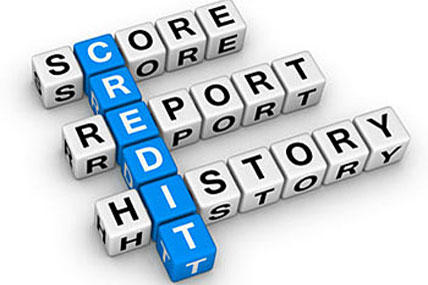Once upon a time, a credit score of 690 put you in the catbird seat when it came to things like renting or buying a home and getting the best interest rates.
Not anymore.
Now, you need higher scores to get the best interest rates: 720 for an auto loan, 740 for a home equity line of credit and 760 for a 30-year mortgage, says Greg McBride, senior analyst at Bankrate.com. Those scores are based on the commonly used FICO® scale, which ranges from 300 to 850.
Since the average credit score has hovered around 690 for the past eight years, that's not good news for most consumers. FICO says nearly 63% of all Americans have a score below 750.
But don't despair. Just because your credit score drops doesn't mean it has to stay low. To keep your score as high as possible, understand how credit scores work. Here's a crash course on how credit scores get calculated and how to keep yours strong.
How Credit Scores Work
FICO isn't the only scoring system available to lenders. The emerging VantageScore®, for instance, also rates consumers on a 300 to 850 scale. No matter which system is used, higher scores are always better.
Typically, a high credit score means lenders consider you a low-risk borrower and will offer you credit at a lower interest rate. All the major scoring models -- the methods used to analyze your financial information -- evaluate your credit reports. These reports are compiled by national credit bureaus Experian®, Equifax® and TransUnion®. They simply record your financial life: whether you paid credit card bills and your mortgage on time, when you opened new lines of credit, if you filed for bankruptcy, and the like.
That's why monitoring your credit reports for errors and building a strong credit history can help boost your scores, regardless of the methodology a particular lender uses.
Even within the FICO scoring system, different models will result in varying score ranges. John Ulzheimer, president of consumer education at SmartCredit.com, simply calls a good FICO score "any FICO score that gets you approved at the best terms the lender has to offer."
Aiming for a credit score of 760 will put you in a good position when you're shopping for loans, adds Ulzheimer.
To reach that 760 mark, understand what actions look risky to lenders -- from delinquent payments to running card balances up so high you have little credit left, or impulsively opening department store credit cards.
Practice Self-discipline
Anthony Sprauve, spokesman for myFICO.com, the consumer division of FICO, which created the FICO score, says high scores aren't difficult to achieve. No matter the current economic or credit climate, your actions alone determine what shows up on your credit report and, therefore, your score.
"Anyone can have a top FICO score by doing three things regularly," he says:
- Pay your bills on time, every time.
- Keep balances low.
- Only apply for new credit when needed. Opening multiple accounts in a short period of time can hurt your FICO score.
What's in the mix?
The three major credit reporting agencies -- Experian, Equifax and TransUnion -- use different scoring systems to calculate your credit score from your data. They also may use differing numerical scales. Therefore, your credit scores will likely vary from one credit bureau to another.
FICO uses these percentages to determine your score:
Payment history: 35%
Amounts owed: 30%
Length of credit history: 15%
Types of credit in use: 10%
New credit: 10%
Monitor your credit report and score
Check your information regularly by going to AnnualCreditReport.com to request a free credit report once every 12 months from each of the major three reporting agencies, Experian, Equifax and TransUnion. Gail Cunningham with the National Foundation for Credit Counseling recommends making one request every four months from a different bureau to help keep an eye open for identity theft.
You'll have to pay to view your credit scores because they aren't included in the reports. You can get your FICO score from myFICO.com for about $20. You also can purchase the VantageScore® with a free report at annualcreditreport.com. By law, lenders must provide you a credit score for free whenever you apply for credit and are turned down or not approved at the best rate.













